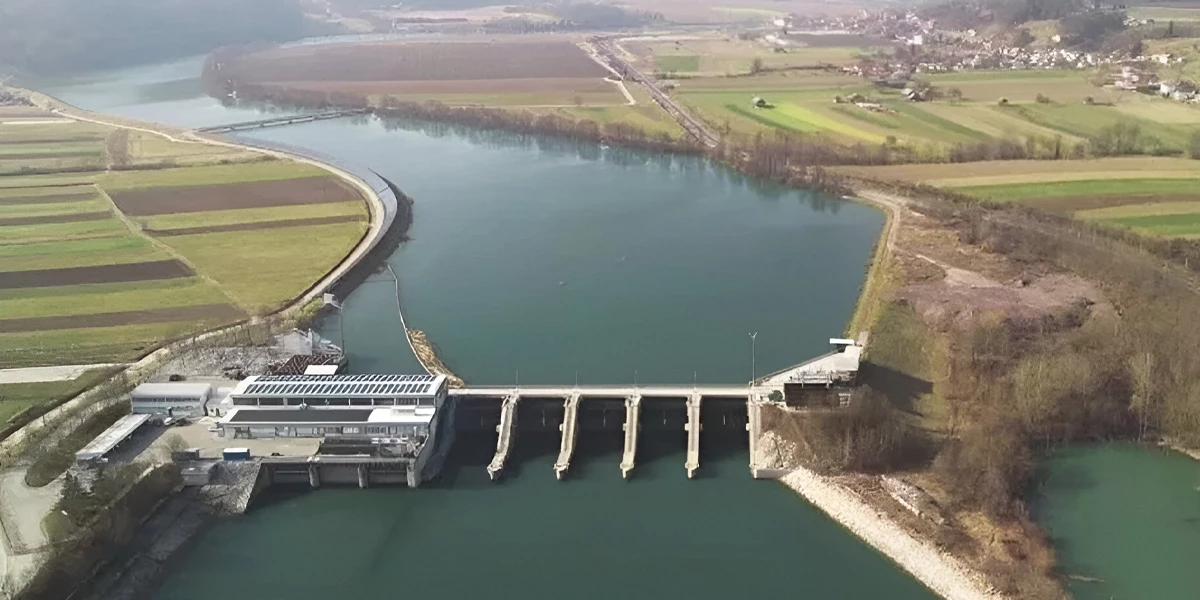

Dams function as crucial water infrastructure that achieves four main objectives:
Flood protection
Irrigation
Hydroelectric power generation
Water storage
The core functioning elements of these components are sluice gates that control water movements while maintaining both accuracy and operational efficiency. The controlled water discharge process depends on these gates to fulfill their multiple safety requirements and maximize water efficiency.
This blog examines the vital function of sluice gate in dam together with available types, and their uses and discusses Yooil Envirotech's transformative approach to modern water control systems.
A sluice gate design functions as an automated component that enables controlled water flow through channels, dams, and reservoirs. The device works as a contour-operable obstruction that allows personnel to adjust its position to control water volume together with pressure and flow orientation. The gates operate as efficient water management tools that protect against potential issues, which include flooding alongside reservoir depletion and uncontrolled water release.
Water management systems at every operational level depend on sluice gates to offer engineers and dam operators flexibility in their operations. Their adaptive water level management features position sluice gates as fundamental elements both for the protection of dams as well as environmental conservation.
Different types of sluice gates in dams are used depending on the specific needs of a dam or water management system. The primary types include:
Vertical Lift Gates: The vertical movement of these gates enables water to flow under sluice gate, when it rises upward. These gates provide accurate flow management and flood protection features in big dams across the world.
Radial (Tainter) Gates: The curved surface of radial gates lets them rotate on an axis to control water discharge flow. Their particular design structure minimizes operational force, which results in superior performance during spillway operations.
Flap Gates: The gating system hinges vertically at its top, thus opening as water pressure behind it increases. As part of their main functions, these gates operate in flood management systems and play a crucial role in tidal control programs to block backflow into rivers and drainage systems.
Slide Gates: Categorically installed to slide both vertically and horizontally, these gates function effectively in controlling water flows through small water channels and pipelines.
Automatic Sluice Gates: These modern gates are equipped with sensors and automation technology, enabling real-time control and operation based on changing water levels or external conditions.
Sluice gates are indispensable components in the operation of dams, performing various critical functions, such as:
1. Flood Control
The basic task of sluice gates serves to control excessive water movement that occurs during periods of heavy rainfall and monsoon weather. Through gate adjustment, operators can manage water flow, which helps avoid floods.
2. Irrigation Management
The water release mechanism provided by sluice gates permits a predictable control of irrigation needs. A reliable water source for farm sustainability depends on this function, which prevents water waste.
3. Hydroelectric Power Generation
The flow of water into turbines depends on the control provided by sluice gates in hydroelectric dams. Optimizing electricity production depends on this essential regulation, which also protects future water needs.
4. Reservoir Maintenance and Sediment Management
Reservoirs collect sediment materials during their lifespan which eventually diminishes their operational storage capability. Dredging sediment from the reservoir using the sluice gate system enables the operational preservation of reservoirs which results in a longer lifespan for the dam structure.
5. Emergency Water Release
In cases of extreme weather conditions or potential dam failures, sluice gates provide a crucial emergency outlet for excess water. This controlled release helps prevent structural damage and safeguards surrounding communities.
Yooil Envirotech has been a pioneer in advanced water management solutions since 1989, completing over 400 projects worldwide. The company specializes in state-of-the-art technologies that enhance water regulation and sustainability. Some of their innovative solutions include:
1. Air-Filled Rubber Dams
Unlike conventional sluice gates, Yooil Envirotech's air-filled rubber dams provide a flexible, cost-effective alternative for water regulation. These inflatable barriers can be adjusted dynamically, allowing efficient flood control, irrigation, and water storage.
2. Bituminous Geo Membrane (BGM) Technology
BGM is a high-performance waterproofing solution that strengthens the structural integrity of dams and reservoirs. It helps prevent water seepage and enhances the efficiency of water storage facilities.
3. Hybrid Steel Gates
Combining the durability of traditional sluice gates with modern engineering advancements, Yooil Envirotech’s hybrid steel gates offer superior water control, minimal maintenance, and increased operational efficiency.
With advancements in dam engineering, modern sluice gates offer numerous benefits:
The effective operation of dams depends entirely on sluice gates because these devices allow operators to control water quantity and reservoir height precisely. The implementation of sluice gates serves multiple purposes because they enable both safe water management and optimal power generation alongside irrigation support.
Yooil Envirotech Creates innovative solutions together with other companies that drive continuous improvement in the evolving water management industry. Modern technologies which include hybrid steel gates and air-filled rubber dams will establish a sustainable water control framework that offers better efficiency alongside reliability and environmental sustainability.
For more information on advanced sluice gate technologies and water management solutions, visit Yooil Envirotech and discover how their expertise is shaping the future of water infrastructure.
